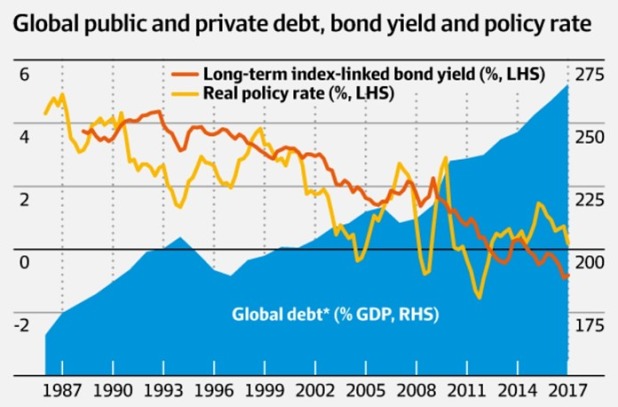The Bank for International Settlements has warned that record household debt levels amassed in the past decade have left Australians among the most vulnerable to a sharp rise in global interest rates.
According to the Reserve Bank of Australia, household debt-to-income ratio for Australia is at an all-time high of 189%.
In a generally positive outlook on the global economy, the Basel-based bank of central bankers points out the generally high risk in many economics due to high debt levels amassed during a period of low interest rates.
“Maturing financial cycles and high debt levels raise the risk of potential weakness in consumption and, in some cases, investment,” said BIS head of monetary economics Dr Claudio Borio. “In many economies, the expansion has been consumption-led. The empirical evidence indicates that such expansions are less sustainable. Our analysis suggests that a number of economies where household debt is historically high can be vulnerable, especially should interest rates rise considerably.”

Australia joins several other generally commodity-exporting countries in having experienced a credit boom after the global financial crisis, amassed in a bid to keep up with rising house prices.
In Australia, Canada, Sweden and Switzerland, household debt rose by 2 to 3 percentage points in 2016, the BIS report stated. This is an ongoing risk to household spending, which in Australia constitutes a majority of GDP growth.
“Increases in interest rates beyond what is currently priced in markets could weaken consumption considerably,” according to the report.
This hearkens to the particular policy challenge facing the Reserve Bank, where low interest rates have fuelled a housing boom but weak consumption coupled with high indebtedness make it very difficult for the RBA to raise rates without weakening the already-languishing consumer sector.
Even if interest rates do not rise sharply, high debt-servicing ratios are already acting as a drag on economic growth, the BIS warns.

“Recent evidence from a sample of advanced economies suggests that increasing household debt in relation to GDP has boosted consumption in the short term, but this has tended to be followed by sub-par medium-term macroeconomic performance,” the paper states.”The main channel appears to be the weight of debt service burdens, which increases alongside the accumulation of debt and higher interest rates.”
Globally, debt levels have soared as interest rates have fallen, and currently comprise 250% of global GDP. This could make any future crises far harder to deal with, the BIS report states.
“Over long horizons, failing to constrain financial booms but easing aggressively and persistently during busts could lead to successive episodes of serious financial stress, a progressive loss of policy ammunition and a debt trap. Along this path, for instance, interest rates would decline and debt continue to increase, eventually making it hard to raise interest rates without damaging the economy.”
“From this perspective, there are some uncomfortable signs: monetary policy has been hitting its limits; fiscal positions in a number of economies look unsustainable, especially if one considers the burden of ageing populations; and global debt-to-GDP ratios have kept rising.”
Source Article from http://www.hangthebankers.com/australia-household-debt-income-ratio/
 RSS Feed
RSS Feed















 June 27th, 2017
June 27th, 2017  Awake Goy
Awake Goy  Posted in
Posted in  Tags:
Tags: 













